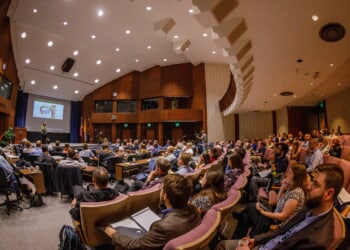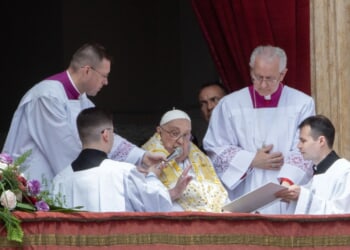Luke Graham was the Conservative Member of Parliament for Ochil and Perthshire South from 2017 to 2019, the candidate in Perth and Kinross-shire in 2024, and a former head of the Downing Street Union Unit.
As the results of the English local elections continue to percolate through Westminster and county towns and parishes of England, the ripples are already being felt in Scotland. Reform’s rise, SNP fatigue and the return of a fractured unionist vote set the stage for an epic 2026 Holyrood election, which, along with the Senedd elections in Wales, will almost certainly define the 2028/9 General Election and course of British politics for the next decade.
Many column inches have already been dedicated to Reform UK’s rise, and although they have yet to face a real electoral test in Scotland, early signs are significant. In the recent Bannockburn council by-election Reform UK came a strong third, just 18 votes behind labour, 207 votes behind the SNP and a clear 189 votes ahead of the Conservatives. This was achieved with almost no local party structure and little effort from the local candidate. Reform also played spoiler in many marginal Scottish seats during the 2024 general election, helping the SNP by further splitting the unionist vote.
At first glance, this success may seem a surprising. UKIP, Reform’s forerunner, peaked at one point nine per cent of the vote share at Holyrood. Now Reform UK is projected to secure 13 per cent – on par with or above the Scottish Conservatives—and stands to win a comparable number of MSPs. All of this achieved without significant Scottish infrastructure or heavy campaigning.
Reform UK is now on the hunt for Scottish candidates and campaigners, in the same way the SNP capitalised on popular discontent with the established parties in 2011 and 2015, Reform UK are looking to do the same. This creates an electoral trap for the Scottish public. You only need to knock a few doors on the average street in Scotland to know there is no love for the SNP; the legacies of Sturgeon, Humza and MacKay still linger. However, people aren’t ready to forgive the Conservatives, are disappointed by Labour and uninterested in the Liberal democrats.
This presents a real opportunity for Reform UK, but a real conundrum for people in Scotland: if you want change, vote Reform, vote Reform, get more SNP. The problem with Scottish electoral arithmetic and the D’hondt system of the votes used for Holyrood elections is that you have a fractured pro-UK majority (even after 18 years of SNP rule and daily anti-UK propaganda, the majority of people in Scotland consistently support maintaining the UK) verses a largely unified nationalist vote, which stubbornly remains at 30-35 per cent, allowing the SNP to remain in power despite their performance.
All of which leads to the fact that although Reform UK will drain votes from Labour and Conservatives, it will take too few votes from the SNP, keeping the SNP in power and denying the people of Scotland the satisfaction of booting the nationalists out of devolved government, a result that Scotland deserves.
After 18 years of SNP rule Scotland needs meaningful change. It is not just the social policy of the SNP that has caused such divisions and regressions, the education system has suffered terribly, with a politicised and restrictive curriculum, now only 28 per cent of students are attaining 5 Highers (the basis for university entry), while 43 per cent of students left school without a single Higher, a significant number of whom are from disadvantaged backgrounds.
In health, the number of full-time GPs has dropped since 2017, while many of the SNP administration’s own targets are not being met. Furthermore, drug deaths are the highest in Europe, and life expectancy, a pretty important measure, is the lowest in Western Europe.
None of this is the fault of Westminster – it is the fault of the SNP, and for the first time in years, people know it. They just don’t have an electoral vehicle to deliver a decisive verdict on SNP Scotland.
So, what can the Scottish Conservatives do?
Having helped to bring down Humza “Useless” and installed caretaker (and inoffensive) John Swinney in Bute House, the Scottish Conservatives have slipped further down in the polls.
In the General Election the Conservatives secured just 12.7 per cent of the vote across Scotland, significantly less than under Theresa May or Boris Johnson and worse than in 1997. The polls for Holyrood forecast the Conservatives at around 13 per cent of the constituency vote, one per cent below Reform UK.
This is a real risk for the Scottish Conservatives at Holyrood, but also at Westminster, where the credible rallying cry has been: “vote Conservative to beat the SNP” – if Reform are polling better, what are the Scottish Conservatives for? Russell Findlay and his team are outlining a “common sense” offer for Scotland, sensibly avoiding Scottish and English nationalism, the challenge will be how to gain cut through in this crowded and sensationalist media environment.
The upcoming Hamilton, Larkhall and Stonehouse by-election on 5 June may offer the first real insight into how these dynamics are playing out. With a Survation poll placing Labour, the SNP and Reform UK within four percentage points of each other, the contest could serve as a real barometer for 2026, and Scotland will get its first view of whether it can escape the SNP’s electoral trap or not.


![Frontier Airline Agents Fired After Video Mocking Passenger on Camera Goes Viral [WATCH]](https://www.right2024.com/wp-content/uploads/2025/05/Frontier-Airline-Agents-Fired-After-Video-Mocking-Passenger-on-Camera-350x250.jpg)


![‘Liberal Sphincters Just Tightened’ [WATCH]](https://www.right2024.com/wp-content/uploads/2025/04/‘Liberal-Sphincters-Just-Tightened-WATCH-350x250.jpg)

![Trump Posts Hilarious Pope Meme, Leftists Immediately Melt Down [WATCH]](https://www.right2024.com/wp-content/uploads/2025/05/Trump-Posts-Hilarious-Pope-Meme-Leftists-Immediately-Melt-Down-WATCH-350x250.jpg)
![NYT Covered for Illegal Alien Accused of Raping a Corpse on NYC Subway [WATCH]](https://www.right2024.com/wp-content/uploads/2025/05/NYT-Covered-for-Illegal-Alien-Accused-of-Raping-a-Corpse-350x250.jpg)
![James Comer Hints at the Epic Behind-the-Scenes Effort Targeting the Deep State [WATCH]](https://www.right2024.com/wp-content/uploads/2025/04/James-Comer-Hints-at-the-Epic-Behind-the-Scenes-Effort-Targeting-the-350x250.jpg)





